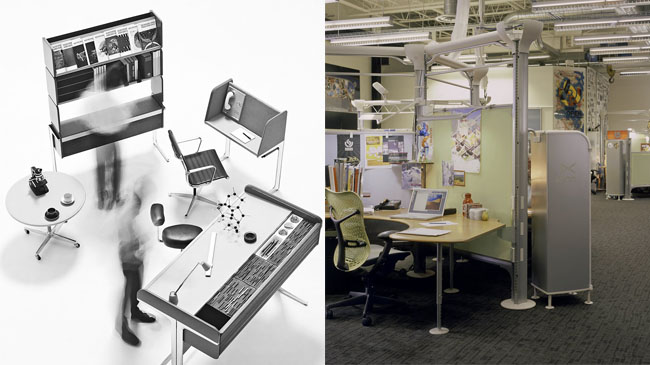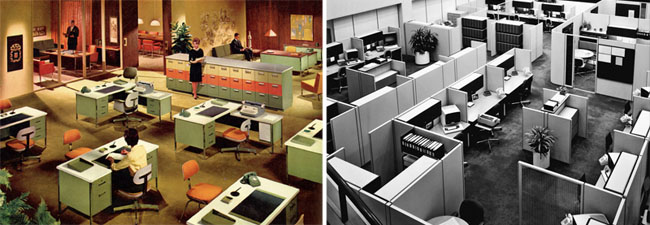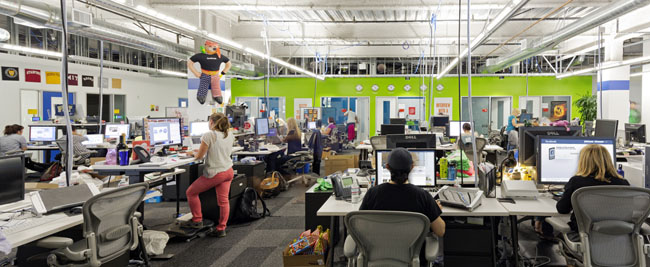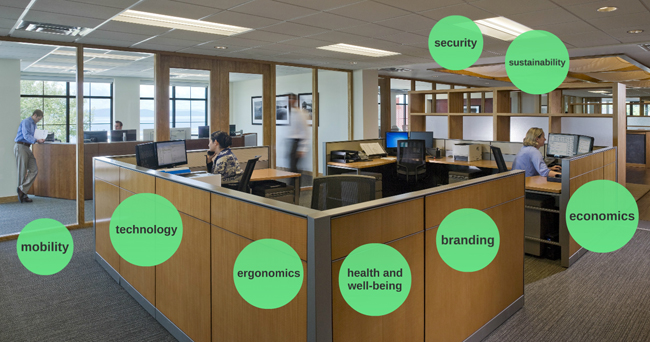Innovation at Work: The Personality Project, Part 1
What is it about each of us that leads to workplace satisfaction? Why do some people love where they work, while others find their physical environment to be a challenge and a hindrance to a productive day?
These were the questions that Cam Featherstonhaugh and I explored earlier this year, as we studied the relationship between personality types and workplace design. Specifically, we looked at how an individual’s personality traits affect their preferences for certain aspects of the open office workspace.
In this 3-part blog post, we will share our theories, research, and results from our study.
Part 1: The Past and the Premise
Our findings were based on the results of a workplace survey that we administered to four local companies representing various industries, as well as to individuals in the general workforce. From the start, we believed this study had the potential to influence our workplace design strategies to improve worker comfort, satisfaction, and productivity. By considering the personality types of a company’s workforce, we believe we can provide a more tailored environment where individuals can work more effectively and with fewer distractions, both in collaboration with others and individually on quiet, focused tasks.

A BRIEF HISTORY OF THE OPEN OFFICE
To truly determine where we are heading, though, we must first look back at where we’ve been. Therefore, we prefaced our investigation of today’s workplace with a brief review of the past 50 years of office design evolution:
We started in the 1950s, as new glass skyscrapers established modernism as the common language for the American office, with open floorplates and workplace layouts based on organizational hierarchy.

In the 1970s, the concept of the open office landscape and performance-based planning was introduced with optimism for the growing class of white-collar workers. A system designed to promote autonomy and privacy for the American worker soon degraded into ubiquitous “cube farms” by managers looking to maximize space. The energy and economic crises of the 70s and 80s exacerbated the declining conditions of the workplace.

The dot-com bubble of the late 1990s eventually led to the open offices of today, with “deterritorialized” plans where people and spaces mix interchangably, and the boundaries between work and play are similarly blurred.
SPACE NEEDS AND REQUIREMENTS
The office of today is undergoing a dramatic transformation due to rapid advances in technology and mobility, along with changes in attitudes on health and well-being, sustainability, and social roles. These technical advances and cultural shifts are influencing our ability to collaborate with others and concentrate effectively in the workplace.

As our workplaces adapt to these evolving needs and externalities, we may find ourselves adjusting to our environments differently, based on our own personality traits and preferences. If this is the case, then the design of a workspace could be improved through the consideration of the personality types of its workers.